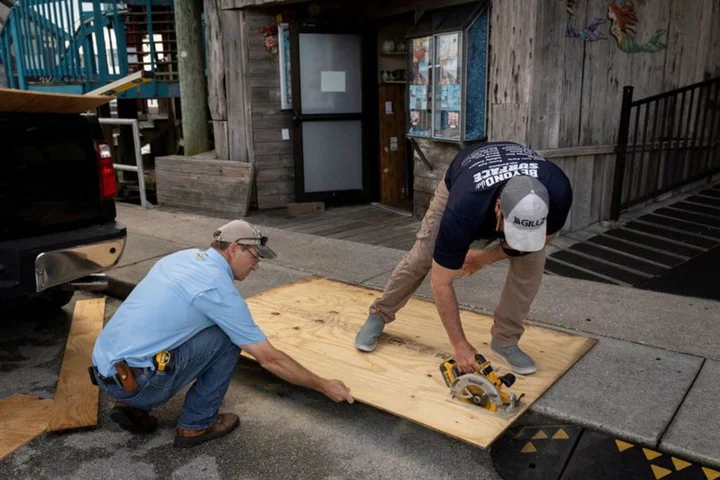By Julia Harte
(Reuters) -Millions of residents could be affected by Hurricane Idalia as it hurtles toward Florida's Gulf Coast, where it is expected to slam ashore on Wednesday morning with winds of at least 111 miles per hour (179 kph).
Evacuations have been ordered in parts of Florida. Most of the state and parts of Georgia and South Carolina are under storm warnings or advisories.
Here are the most important things to know about Idalia's projected impact.
PATH AND LANDFALL
Idalia grew from a tropical storm into a hurricane early on Tuesday, whirling northward over the Gulf of Mexico after causing floods in western Cuba that forced residents of coastal towns to seek higher ground.
It is expected to reach Category 3 on the five-step Saffir-Simpson wind scale, qualifying it as a major hurricane, before reaching Florida's Gulf Coast on Wednesday morning, according to the National Hurricane Center (NHC).
Three major hurricanes have struck Florida in the past seven years: Irma in 2017, Michael in 2018 and Ian last September.
Idalia's center will likely cross Florida's coastline somewhere in the Big Bend region, where the state's northern panhandle meets the Gulf side of the Florida peninsula, the NHC projected.
'STORM SURGES' and 'KING TIDES'
The deadliest threat Idalia poses is a surging wall of seawater 10 to 15 feet (3.0 to 4.6 m) high that could flood low-lying areas along Florida's coast, according to authorities.
"Storm surges" occur when high winds and atmospheric pressure from an oncoming hurricane force ocean water onto land. The resulting floodwaters may take a couple of days to subside.
A "king tide" - the highest type of high tide, caused by the extra gravitational pull that occurs when the sun and moon align with Earth - is also expected on Wednesday, which will likely exacerbate the surges from Idalia.
Hundreds of miles of Florida shoreline are under storm surge warnings as Idalia approaches, from Apalachicola Bay in the panhandle through Tampa, the state's third-largest city, and down to Sarasota in the south.
EVACUATION ZONES
Authorities are scrambling to move thousands of Florida residents out of danger before nightfall.
The Florida emergency management agency listed 28 counties with evacuation orders.
Sixteen counties issued mandatory evacuation orders for certain residents, especially those living in coastal and flood-prone areas or in mobile homes, recreational vehicles or structurally unsound housing.
Local authorities opened dozens of shelters for evacuees. They urged residents to take the evacuation orders seriously. "Please do not become complacent – take action now if you have not done so already," wrote the sheriff's office of Citrus County, north of Tampa, in a Facebook post.
DISRUPTIONS
Even Floridians not under evacuation orders should expect disruptions as a result of Idalia, from power outages to shuttered schools and businesses.
Florida Governor Ron DeSantis has declared a state of emergency for 46 Florida counties. About 5,500 National Guard troops have been mobilized and thousands of electricity workers are standing by to help restore power quickly after the hurricane passes.
School districts around the region canceled classes starting on Monday afternoon. Tampa International Airport closed commercial operations and did not expect to resume until Thursday.
(Reporting by Julia Harte; Editing by Andy Sullivan and Cynthia Osterman)

